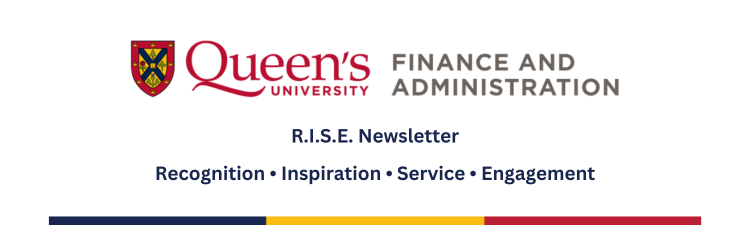
The VPFA R.I.S.E. Newsletter recognizes employee excellence across the portfolio by breaking down silos across units and departments, showcases priority projects, and aims to build a sense of community and belonging.
Summer Reflections and Wishes

Welcome to the second edition of the VPFA R.I.S.E newsletter!
I invite you to read and reflect upon the contents as we recognize additional employees who contribute to our community in powerful and meaningful ways in the Employee Spotlights section; feature innovative and impactful programs in the Portfolio Highlights section; nurture a healthy and resilient community through resources shared in the Well at Work section; delve into current reads and podcasts in the Reading and Podcast Corner; honour National Indigenous History Month and celebrate Pride Month; and continue to showcase buildings and spaces which are the gems of our campus.
Based on feedback from the last VPFA town hall, and your interest in knowing more about the departments that comprise our portfolio, I would like to offer you a glimpse of the leadership, teams, and their impactful initiatives. I am pleased to start things off by featuring the IT Services team, led by Marie-Claude Arguin, Chief Information Officer and Associate Vice-Principal, whose collaborative mindset continues to enable impactful IT initiatives. We will continue to feature other members of my leadership team, their units, and priorities in future editions of the newsletter.
Please consider signing up for a future Coffee with the VPFA. You each bring special talent, valuable perspective, and distinctive excellence to the portfolio and to Queen’s. I am grateful for this opportunity to hear directly from you.
Summer is a great time for reflection and renewal. However you choose to spend your time for the rest of the season, I hope you have the opportunity to disconnect, relax, and spend time with your friends and family. I’m personally looking forward to taking some time to recharge.
My very best wishes for a happy, safe, and rejuvenating summer.
Donna Janiec, FCPA, FCA
Vice-Principal (Finance and Administration)
A Collaborative Mindset for Impactful IT Initiatives
.jpg)
Paul Muir, Information Security Officer
Tony Overvelde, Director of Operational Oversight
Jeff Glassford, Director of Service Development
Marie-Claude Arguin, CIO and AVP (IT Services)
Saneel Vasram, Director of Strategy and Partnerships
Jason Neufeld, Director of Service Operations
Team Highlights
Information Technology (IT) Services is poised to deliver on its core mission to strengthen student success and research impact through enabling information and technology services. This proactive team consists of 148 permanent employees, 11 term employees, 20 part-time and full-time students, and a handful of temporary contractors. ITS currently has 16 vacant roles. The Department is divided into five main groups: 1) Strategy and Partnerships, 2) Service Development, 3) Service Operations, 4) Information Security and 5) Operational Oversight.
Project Highlights and Impact
Together, the team creates significant impact. The entire enterprise digital ecosystem remains fully operational 24/7/365 to allow the Queen’s community to conduct its daily tasks effectively (network infrastructure, applications, classroom support, security operations centre). It is no small feat for the Department to manage over 100 projects every year. It also manages 2,500 mobile devices, and over 100 software contracts annually. The IT Support Centre answers between 3000 and 4000 tickets each month.
IT Services actively supports the Queen’s Strategy and several initiatives “rise to the top” as priorities laid out in IT Services’ Annual Operating Plan. Among these, in partnership with Queen’s leadership, is the development of an enterprise digital roadmap: For the Digital Future. The current version of Queen’s Digital Roadmap (2020-2023) clearly identifies IT Services’ strategic priorities. The next update to the roadmap will chart the university’s digital future over a longer horizon. With respect to recent accomplishments, the team has made great strides in maturing capabilities to advance our cybersecurity posture under a comprehensive multi-year Cybersecurity Program; has recently begun implementation of an enterprise Constituent Relationship Management (CRM) capability; has worked closely with the Office of VP Research on initiatives such as the Ontario Health Data Platform in support of COVID research; and has introduced numerous tools to support the evolution of teaching and learning through and following the pandemic.
Leadership Highlights
“Information technology is a great enabler of Queen’s mission and goals but is only possible through the dedication of all Queen’s IT professionals, not just those in IT Services. My Directorate team and I feel a profound responsibility to our institution, and it is a joy to be able to collaborate with such extraordinary people in our portfolio and across the Queen’s community,” says Marie-Claude Arguin, Chief Information Officer (CIO) and Associate Vice-Principal (IT Services).
Information technology is the grand throughline of a career that has taken Marie-Claude all over the globe. Her extraordinary journey started in her hometown of Lac-Mégantic, Québec. She graduated from Royal Military College of Canada with a Bachelor’s degree in Mathematics and Physics, and subsequently completed a Master’s of Defense Studies with a specialization in Strategic Leadership. After completing 23 years of military service as an Officer in Information Technology, she left the Canadian Armed Forces in the aftermath of an unprecedented environmental tragedy that left her hometown’s downtown core destroyed to support the rebuilding and community healing process for nearly six years. Marie-Claude eventually found her way back to her love of IT when she came to Queen’s in 2019 and then began her mandate as Chief Information Officer (CIO) and AVP (IT Services) in 2021. She could not be more thrilled to be part of our community.
Employee Spotlight
Get to know the people across our portfolio serving in a variety of roles.
Sandra Valente Roscher
How is employee and labour relations connected to foreign languages and language interpretation? Polyglot, second-generation Canadian, Queen’s alumna, mother of two, and long-time Queen’s employee, Sandra Valente Roscher gives us an illuminating glimpse into the complex world of Human Resources (HR) through the lens of culture and inclusivity.
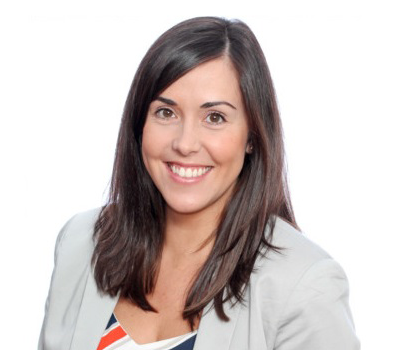
Please tell us about your role at Queen's.
I am a Senior Labour Relations Advisor within Human Resources. To explain what I do, in the best of terms, is to make sure that everybody is doing what they are supposed to be doing in their job, and that everybody gets along at the same time. I work with several unions and employee groups, and some aspects are promoting harmonious employee/management relations, ensuring fair and equitable treatment, workplace policies, and family status accommodations.
What do you enjoy the most about your role?
What I really enjoy is fostering a workplace of understanding, transparency, and communication. Some of my regular duties include helping people understand collective agreements, legislation, managing conflict resolution, ensuring that we follow the right processes and procedures, and ultimately contributing to a culture of well-being and support at the university.
Please tell us about your journey.
Originally, I wanted to be an interpreter and work with various cultures. I love languages. I speak Portuguese, English, Spanish, and a bit of French and Italian.
For my undergraduate, I studied Languages, Literatures and Cultures at Queen’s. During my undergraduate courses, I had an opportunity to work as a casual employee in Pensions and Benefits within HR. I think there is one view of HR when you’re working outside of it, and then when I was inside, I realized that there is a lot more to it. What is interesting to me is that I am able to practice my passion of language interpretation in my role. Depending on where you go, you’re working with different cultures. Every department is a different culture. Every group has a different culture. Every union is different. It’s almost like several distinct cities in one big country. The university is like the country. I meet a lot of people, I learn about all these little cities, and how to change my approach depending on which city I am currently working with.
After I graduated, I did a one-year term in Employee and Labour Relations (ELR). I’ve worked in various roles within HR after that – Organizational Development & Learning, Compensation, Client Services, and then back to ELR.
When I decided to continue my career in HR, I completed a Master of Industrial Relations (MIR) – again at Queen’s. Whilst the focus of Industrial Relations is a lot more technical, the similarity is that it is about how to work with people, and that each situation may require a different approach. Cultural understanding is so vital – and it’s so interesting to learn that some work groups are different even when you’re working at the same institution.
What project have you recently been involved with that you're most proud of?
The pandemic really changed how my day-to-day job looks, and now it is more about being both proactive and responsive to certain employee and labour relations. While most of the work that I do is confidential, what I can say is that it feels very rewarding when I am able to help a unit, or an employee resolve an issue and they are excited about their work again. Building that compatible relationship between management and staff to the point where they are happy, satisfied, and working well together makes my job that much more fulfilling.
What have been some of the most important lessons you've learned throughout your career?
The number one learning for me was to ask questions and ask lots of them. Also - that I can learn from every single person I meet. I have been at Queen’s for 16 years, and I feel like I am constantly learning. It is all about keeping an open mind and knowing that despite having had a long tenure here, there is always more to know, more to understand, and more to grow.
What's one thing on your bucket list, and why?
I think this is probably a no-brainer by now, considering my love for languages. Traveling. More traveling in Europe, specifically. I’d love to get a caravan and just drive through the continent and meet all the locals.
In my spare time, and to keep my Spanish up, I watch telenovelas such as Cable Girls and Velvet.
I’m biased, but my favorite country in Europe is Portugal since I have a lot of family there. Both my parents lived in the same town in Ovar, Portugal. My maternal grandparents immigrated to Kingston in 1967, and on a trip back, my parents re-connected. My father was a folklore dancer and when he came to Canada, my parents led a folklore group, where they taught. These were some of the traditions that we lived and breathed.
I think my family history, the fact I speak Portuguese at home, and that I did a lot of interpreting for my grandparents and parents led me down this appealing path of world cultures and language interpretation and finally human resources.
If you could choose one word that sums up Queen's, what would it be and why?
Opportunity.
Queen’s is a place of growth, and it has been good to me. As a student, it allowed me to balance my work and study life. As a parent, it’s the understanding that my family comes first. There are so many opportunities here that I am always excited for the future.
Being so embedded within Queen’s, Sandra knows (and can sing) all the words to “Oil Thigh” and considers Professor’s Walk her favourite space on campus.
Glenn Buckholtz
Data enthusiast, proponent of continuous learning, robotics mentor, problem-solver, Queen’s alumnus, and Kingston native, Glenn Buckholtz is your go-to person for solutions. Constantly trying to broaden Queen’s technological horizons, Glenn believes big changes happen from many small acts as evidenced by his impactful work both within IT Services and the broader community.
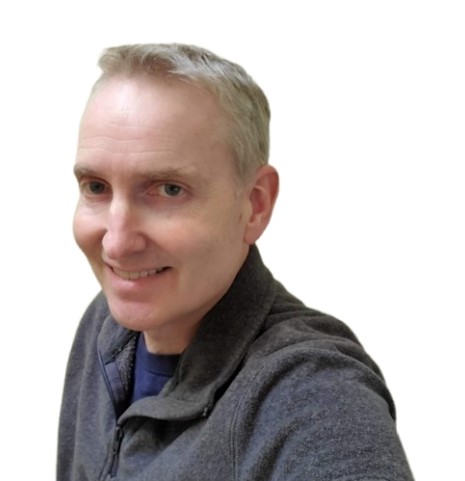
Tell us about your role at Queen’s.
I am a data engineer with the data platform group - a relatively new group formed about three years ago. The university, as part of its long-term strategy, realized that we needed a more formal way to manage data. For example, for records in PeopleSoft (an enterprise application – one that is used across the entire organization), it is difficult to extract data from it or combine it with one’s data for any analysis or desired workflows. What my team and I provide are data wrangling capabilities and dashboards for projects for the university. We help interpret and attach meaning to raw numbers.
For decades now, we have been using spreadsheets, and that works up to a point. We wanted to be able to further data proficiency and take Queen’s to the next level by using a newer generation of tools.
What do you enjoy most about your role?
I love helping people solve problems. I have a data platform community of practice as a Teams group that is open to everyone. If you’re wondering “How can I do this?”, or “What tools can I use?”, that’s the place to go.
There are also interesting and impactful community projects. The new bridge, Waaban Crossing, which was decades in the making, finally came to fruition in the fall of 2022. A large bridge is made up of sections that allow for expansion and contraction. Civil engineers installed sensors on the bridge which measure the expansion and contraction of each of the spans. So, they had all of this data and weren’t sure how to analyze and report their findings. I knew one of the engineers, and I said to him, “Oh you could use Power BI to do that.” We replicated the graphs that they had made in MATLAB, and we helped by creating a dashboard that has all the real-time and historical data. This data gathering initiative was done in collaboration with the City of Kingston, and we call it a smart bridge. This is not something that has been done very much at all. We’d like to share that data back with the City, and they would in turn like to share it with the community. The engineering company that built the bridge would like to see that information as well because they rarely get to see this in practice.
Please tell us about the part you played in shifting platform tools to add value across Queen’s.
I am constantly exploring new tools to solve existing problems. There’s a piece of technology we have called the Power Platform. For personal, small problems, Power Platform allows you to automate anything in the Microsoft 365 space. For example, if you receive an email with a subject line and an attachment, you can use Power Platform, and it will automatically take that email, extract the attachment, put it in a folder, and then notify somebody in Teams that a new item came in.
It's actually a very exciting time for me. We are using Power Platform for the first time to write an enterprise application for the university for faculty term adjunct hiring. It’s a very customized process as it is difficult to seek out a solution that does this type of hiring. This is an effort to harmonize and standardize the way that faculty are hired. It is very important because there are collective agreements between staff, the faculty association and the university, and it is crucial that everyone interprets and applies the rules the same way.
I wrote a proposal on how to tackle this using the Power Platform. My director, Jeff Glassford, is a pro-Power Platform person, and he advocated for it as well. So, here we are – writing an enterprise application for the very first time using the Power Platform.
Additionally, I created and teach an interactive course - the first of many hopefully - called Data Proficiency 100, which began in the fall of 2022. You can enroll through the Human Resources (HR) Learning Catalogue. It’s four morning sessions over 12 weeks – a semester – with lab work.
We turn a common scenario at Queen’s such as casual timesheet reporting into a business case. We evolve it by taking one step beyond spreadsheets, and then expanding it module by module, using a broad range of new tools in Microsoft 365. In the end, it becomes a story that we can share more effectively with everyone. We teach staff how to keep data in one safe location and keep better track of revisions of files through the use of newer tools.
Through this course, we’ve been able to reach about 25 different departments.
Now we had three sections to accommodate everyone in the winter semester and hope to have another offering again in the fall.
What would you like to tackle next?
I don’t think of myself as someone who’s going to revolutionize the entire university. I enjoy working with people to solve their smaller problems that in turn enhance the university. One of my professors used to say that it’s better to improve 1000 things by 1% than to try and improve one thing by 1000%.
Continued below
Glenn Buckholtz cont.
Our Executive Assistant came to me with a problem regarding hybrid meetings. Currently, when you send a Teams invitation for a hybrid meeting, your only options are to accept, decline, or tentative. So, she has no idea who is going to show up to either the physical meeting or the online one. The only way she can determine how someone is attending is by going through the management chain - asking the directors, who then ask the managers, who then ask the individuals. The answers are collected by the managers, who send them to the directors, and finally, the executive assistant, who then has to consolidate this information and determines, “Okay, so there are 75 people attending in person.”
That is a lot of time spent collecting information.
We’ve begun working on this and we think we have a solution that we’re just finalizing now.
Showing executive and administrative assistants how to use Power Automate and automate some of their tasks would make their lives easier. Am I revolutionizing all of Queen’s? No, but I am improving lives by 1%.
We’ve heard that you are passionate about imparting STEM skills to youth in the community. Can you tell us more about this?
I have a Bachelor of Science in Statistics from McMaster University and a Master of Science in Statistical Consulting from Queen’s. For 8 years now, I’ve been mentoring two local FIRST® Robotics Competition (FRC) robotics teams – one for the school board, Lake Effect Robotics, and one community team called the Machine Mavericks. The students are from Grades 9 through 12. This program is international. There is the fall section, which is the pre-season where we teach basic skills such as how to program and build; and then in January, they announce the theme of that year’s game. You then have about six weeks to design, build, and test your robot before you can compete. These are fast, 120-pound robots, and it’s quite a challenge to get them done!
Every year we try to improve the pre-season to get students engaged as best as possible. A friend of mine (the very same engineer who worked on the Waaban Crossing) came up with a great idea. The idea was to create a simulation, a scaled-down version of the real game, for the pre-season. This past year we were able to bring that idea to life. We built basic robots and gave the students the design challenge to pick up a part and place it in a goal. In December 2022, we created a mini-competition with two teams and their two robots. It worked very well in preparation for the Competition.
In winter 2024, Queen’s will be hosting an FRC event, and people from all over Ontario and likely the United States will be competing here! I encourage everyone to come out and have a look!

What’s one thing on your bucket list?
I’d like to retrofit an old car into an electric car.
I have a 1976 Pontiac Firebird that I bought when I was 16, which I still have, and it would be fun to convert that car into an electric. In high school, I won the Auto Shop Award, so combined with my robotics experience, I think I have a chance! I know I'll have fun trying.
If you could choose one word that sums up Queen’s, what would it be and why?
Family.
I think we all care and look out for each other at Queen’s.
Being a community-oriented person, Glenn is a great resource for those new to Queen’s and Kingston. To summarize his life philosophies and worldviews in his own words, “I don’t aspire for greatness or have the world recognize me. You make a difference by helping people one at a time, giving yourself to others, and hopefully, you’ll have positively influenced their lives. That’s how you live on.”
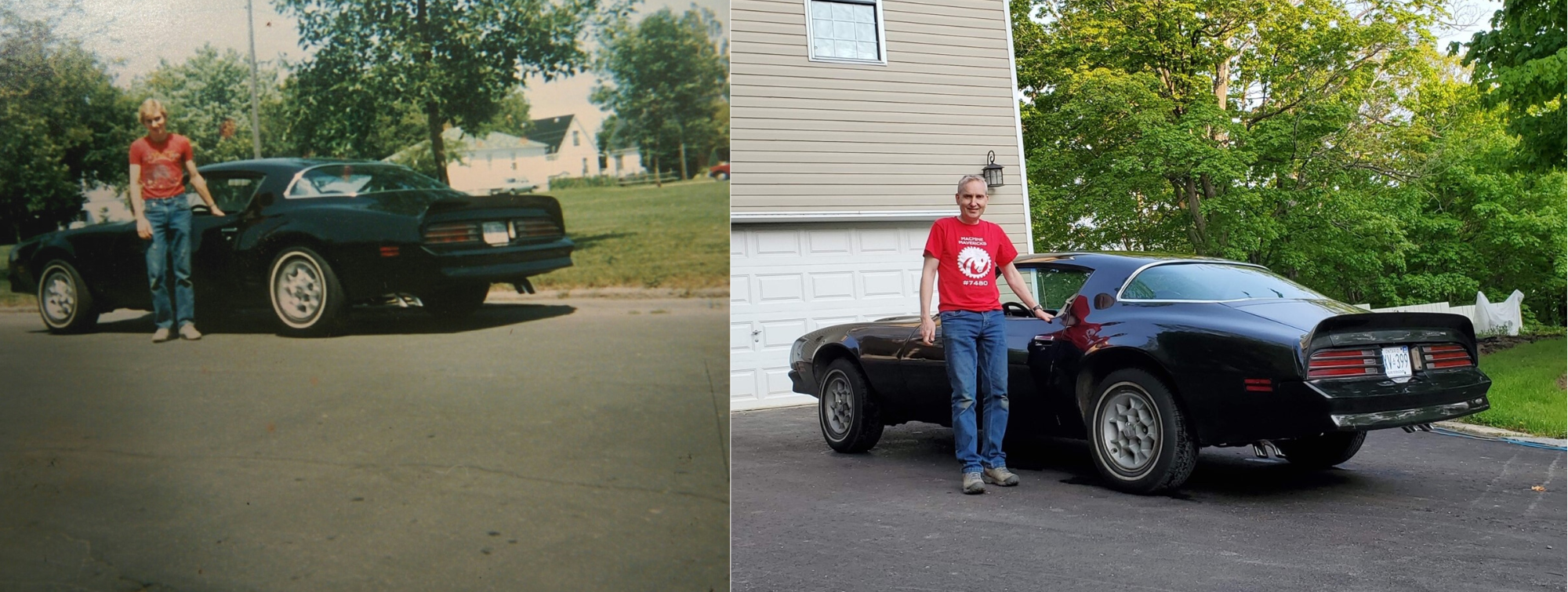
Portfolio Highlights
No Voice Left Behind
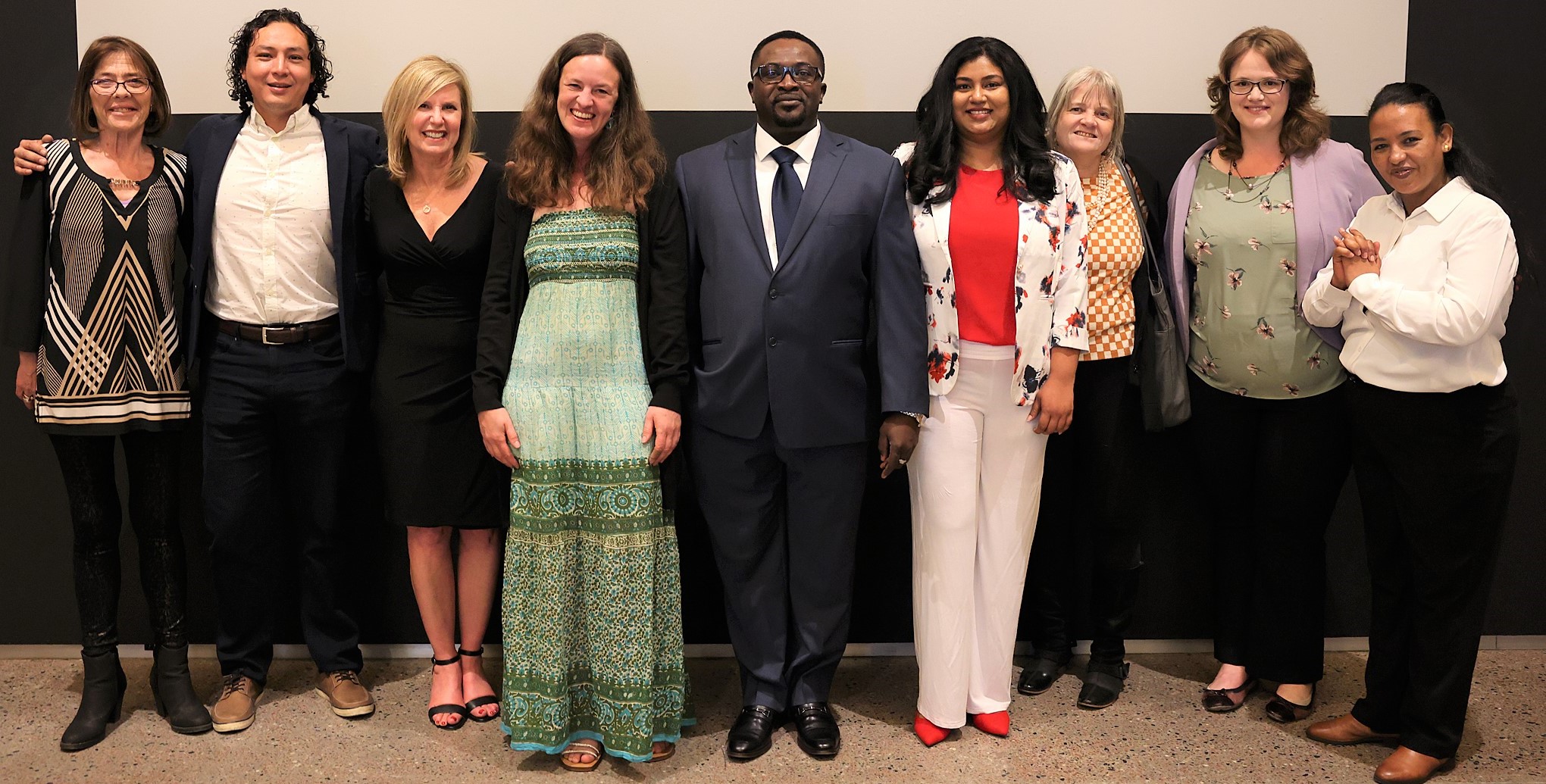
In April 2023, a talented pan-university team garnered the 2022 Special Recognition for Staff Awards. This collaborative team, comprised of staff from various portfolios including the Office of the Vice-Principal (Finance and Administration) (VPFA), Queen’s School of English, Facilities, Human Rights and Equity Office, and Human Resources, were instrumental in pioneering the Queen’s Career Gateway Program. As award recipients, they were recognized for their novel ways to recruit and support diverse talent, thus contributing to not only the working and learning environment at Queen’s but also to the newcomer/international community in Kingston.
Sponsored by the VPFA, the Queen’s Career Gateway Program is an upskilling and employment pathway at Queen’s for equity-deserving persons, including newcomers to Canada and refugees who lack formal or Canadian-recognized education, within the Kingston community through the provision of paid-release time English-language training. Participants are employed as casual cleaners within Facilities and Residence.
“I am extremely proud of this program and the Staff Awards are a testament to the impact that Queen’s can make in the broader community,” said Donna Janiec, Vice-Principal (Finance and Administration). “Collaboration breaks down silos.”
This sentiment is echoed by Lisa Crosbie-Larmon, Director, Human Resources, Facilities, who said, “Having had the opportunity to work with such a talented group of colleagues, and to get to know the program participants, has been a professional development opportunity like no other that I have experienced in my career.”
Beyond English language sessions, this exceptional professional development program removes barriers to employment at Queen’s and attracts and retains talent by supporting participants’ needs as they navigate Queen’s and life in a new country.
The program’s influence on both the participants and Queen’s is evidenced by the cross-cultural learnings that staff have noted as invaluable. All participants who completed the program went on to successfully obtain term or continuing positions at the university. These remarkable results achieved in the inaugural year of the program (2021-2022) highlight the importance of designing an initiative with the principles of Indigenization - Equity, Diversity, Inclusion, Accessibility, and Anti-Racism (I-EDIAA) and the power of innovation.
“I recently applied for a new position at the university, and I got it. If you were wondering if the Career Gateway Program works, let me tell you that it does as it gave me the courage and confidence to apply.”
- Luis Herrera, Facilities Assistant, Smith School of Business; and Alumnus of the First Cohort of the Queen’s Career Gateway Program
Currently in its second year, the Gateway program was recently nominated for the Governor General’s Innovation Award. The program team continues to make great strides, explore, and build new partnerships to embed the program more deeply into the Kingston newcomer community. These efforts directly enhance the university’s social impact and exemplify Queen’s vision of embedding the UN Sustainable Development Goals (SDGs) into the university’s culture and values.
A Bridge to Hope: Colleagues Help Build a Forever Home
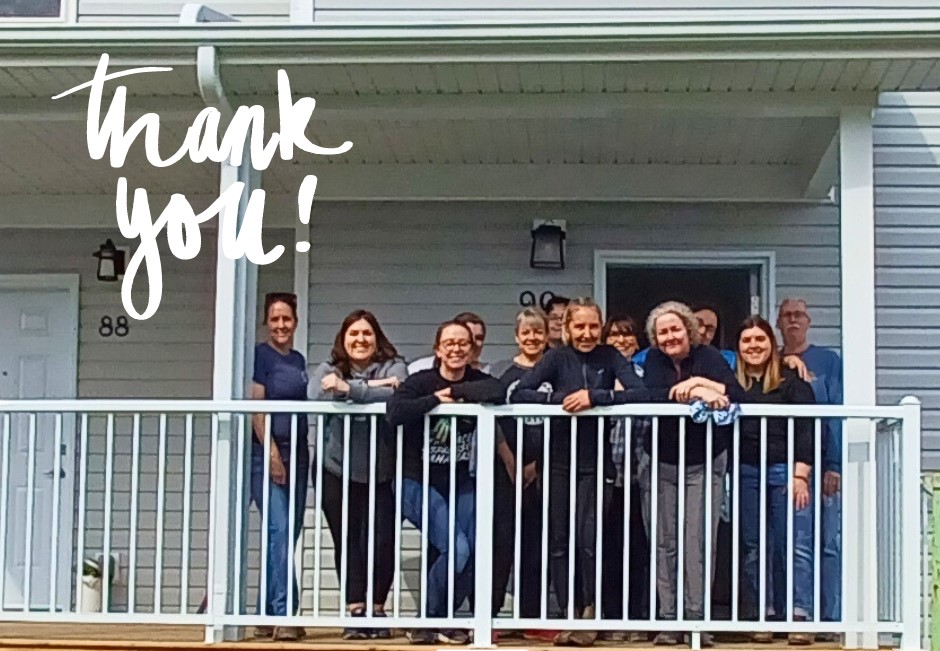
In the fall of 2022, Kristen, a Client Service Representative within Human Resources (HR), applied for a home through Habitat for Humanity (Habitat).
She was selected.
Homeownership through Habitat includes a commitment to complete 500 volunteer hours. The local Habitat, Kingston Limestone Region, offers workshops on budgeting, home maintenance, and more. Kristen began painting and working on the build in late January 2023 and had to fulfill her volunteer hours by May.
A group of colleagues from across the HR department rose to the occasion when Melissa Morrison-Belleau, Senior Director, Client Services, circulated an email about Kristen’s situation. Melissa’s email, Kristen says, taught her the importance of asking for help.
“Being a single mother is daunting, but this experience with my team made me feel like I am not alone,” Kristen said.
On a weekend in April, this talented team rolled up their sleeves and helped Kristen paint and clean her new home. The hours they spent aided Kristen in achieving her required number of volunteer hours as well.
Community initiatives provide a platform for individuals to connect with one another, build social bonds, and nurture a sense of belonging. Supporting Kristen in her endeavour to afford a safe home also became an unplanned team building exercise for the group. “It brought together several staff from across our department together, and we ended up seeing each other in a different light. It took the work away, and we were just people,” Kristen said.
The team offered their assistance again during Mother’s Day weekend when they helped paint Habitat’s offices. This collaboration had an impact on the overall well-being of both those involved and contributed to the community as a whole.
With her move-in date fast approaching, Kristen’s excitement is contagious. “I feel like a weight has been lifted and I can breathe again,” she says.
The team’s willingness to help has offered Kristen a solid foundation for long-term planning, pursuing opportunities for growth, and creating an environment where her family can thrive. Such grassroots efforts directly contribute to Queen’s success in fostering a welcoming and inclusive community.
Well At Work
Workplace Strategies for Mental Health is a website for employers and employees to find tools and resources for workplace mental health and psychological safety. Everything on their website is available for all Canadians at no cost, compliments of Canada Life. Many of the workshops run by the Employee Wellness Services team are from these resources.
Workplace Strategies for Mental Health tools and resources are:
- Evidence- and practice-based
- Easy to use – like turn-key workshop materials
- Customizable
- Produced in English and French
- Available to download or print
Here’s an information sheet that provides a glimpse into Workplace Strategies. You can download the PDF – then keep it handy for your reference and for sharing.
For more information visit Workplace Strategies for Mental Health.
Customized Employee Wellness Services Opportunities
Did you know that the Employee Wellness Services Team can design a customized workshop or presentation for you and your staff on topics of your choice? Examples include, taking a break; plan for resilience; having a mental health conversation, and/or the EWS Team can work with LifeWorks to have professionals present to you on other topics of your choice, e.g., mental health awareness. If you are interested in finding out more about this program, please contact employee.wellness@queensu.ca
Thrive 365 Initiatives
- Worldwide Knitters Day - June 9, Drop in between 2 pm-4 pm at Snodgrass Arboretum
- Gratitude Webinar - June 20, 11 am-12 pm
- Putting Recognition on the Agenda - June 29, 10:30 am-11:30 am
- Getting Organized Webinar - July 12, 10 am-11 am
- Is Happiness a Journey or a Destination Webinar - August 17, 1 pm-2 pm
VPFA Recommends

The books we read and the podcasts we listen to, can shape how we see ourselves, our communities and the world. This collection of books and podcasts shared by our colleagues is an opportunity to broaden our horizons, expand our worldview and inspire us to shift our thoughts about the world around us and our place in it. Happy reading! Happy listening!
Books:
My Beloved World by Sonia Sotomayor
- Suggested by Strategic Procurement Services (SPS) e-procurement staff
Genre: Non-fiction
In a story of human triumph, Sonia Sotomayor, the first Hispanic Justice of the Supreme Court of the United States, takes us through her childhood, personal struggles with type 1 diabetes, and her ascent. It starts off as a tribute to her Puerto Rican roots, her family for their humble beginnings growing up in the Bronx and dealing with a chronic health condition from a very young age. It’s clear that her perseverance led her to Princeton and Yale which seem like accomplishments on their own, but it didn’t end there: Sonia was first appointed as a Federal judge by George H. Bush and later nominated to the Supreme Court by Barack Obama. Her memoir goes deeper into the personal side of why she pursued law and the political winds she weathered in her life and her career.
Lead with AND: The Secret to Resilience and Results in a Polarized World by Tim Arnold
- Suggested by ITS Directorate, Service Development
Genre: Non-Fiction
From Canadian leadership development expert, Tim Arnold, this book will help you to develop the skills you need to navigate decision-making in the overly polarized world we live in.
In the Garden of Beasts by Erik Larson
- Suggested by Supriya Venigalla, Office of the Vice-Principal (Finance and Administration)
Genre: Non-fiction
1933 Berlin. William E. Dodd, an academic, becomes America’s first ambassador to Hitler’s Nazi Germany. The Third Reich is at first new and exciting, and the Dodds (and the world) know no different. Set during a turning point in history, Larson brings to life the tense atmosphere of that period, with portraits of characters such as Goebbels and Göring, and takes you on an unforgettable journey where you experience events as they unfold in real-time.
Podcasts:
Stuff You Should Know (SYSK)
- Suggested by ITS Directorate, Service Development
Since its debut in 2008, SYSK has been one of the most popular podcasts in the world. Hosted by Josh Clark and Charles Wayne “Chuck” Bryant, SYSK is infused with humour through the use of popular culture as a reference whilst debating topics such as champagne, the Stonewall Uprising, true crime, and more.
Dare to Lead with Brené Brown
- Suggested by Christine Datta, Buyer and Procurement Analyst, SPS
Based on her book, Dare to Lead, American professor Brené Brown’s podcast debuted at #1 on the New York Times and Wall Street Journal bestseller lists. A must-listen for leaders at every level, the podcast features conversations with the “culture-shifters” and “troublemakers” of the world.
Wilhelm Presents: Frightening Tales
- Suggested by ITS Directorate, Service Development
Perhaps not everyone’s cup of tea, Wilhelm Presents: Frightening Tales runs annually from May through to a grand finale on All Hallows Eve. A new spooky, family-friendly story is posted each week with intriguing titles such as “A Little Homework Never Hurt Anyone”, “The Tree’s Wife”, etc. According to a staff member on the ITS Directorate, “I will occasionally put one of these on during a long drive with my teenage kids and I'm fascinated at how they get engaged in the same way that the Twilight Zone used to draw me in.”
Please note that if any of this content triggers discomfort or strong emotions, professional emotional support is available through Queen's Employee and Family Assistance Program (EFAP).
June is National Indigenous History Month
This month commemorates Indigenous History across the nation. The rich stories, traditions, strength, and achievements of First Nations, Inuit, and Métis Peoples of this land are uniquely interwoven into the diverse mosaic that is Canada. Since time immemorial, Indigenous peoples and communities have celebrated their culture and heritage close to the longest day of the year, the summer solstice. In 1996, June 21 was declared National Aboriginal Day (now National Indigenous Peoples Day).
Recipe: Hoyan Donuts
“Hoyan” is Oneida for “another”. The donuts are shared by exclaiming “Hoyan!”, which means “to another new year!”

Recipe and image from The Oneida Language & Cultural Centre
Ingredients:
1 cup white sugar skatikápslat owiskla onutákel̲i̲’
4 tbsp butter kayé: watokwa’tslowá:nʌ̲ owistohsel̲i̲’
2 eggs onhúsa̲
1 cup milk skatikápslat onúta̲’
3 cups flour Áshʌ nikatikápslake othé:tsli̲’
1/2 tsp salt tshatewatokwatsliyo tyohyó:tsis
3 tsp baking powder Áshʌ kʌ’niwatokwatsla watu’kwatha’
1 tsp vanilla úska kʌ’niwatokwatsla
1 third of bottle cooking oil for frying (use enough to cover bottom of fry pan) kʌ:y̲é̲
Method:
Mix sugar, butter, eggs, and milk together. In a larger bowl, mix the next (dry) three ingredients – flour, salt, and baking powder. Stir the wet mixture into the dry mixture. The trick is to add enough flour to make the dough roll out without being sticky. Roll out onto a pastry board (approximately ¾” thick) and cut out the hoyan into donuts or other shapes. Preheat the cooking oil while cutting out the shapes. Deep fry donuts for about 2-3 minutes per side until the edges start looking brown. Recommend medium-high heat then lower to medium-low if donuts brown too fast.
The Government of Canada offers free visual resources for promotional use. The visual displayed here incorporates the various elements that illustrate Indigenous cultures – the sun (the summer solstice) at the heart of the festivities; the First Nations, Inuit, and Métis as well as the four elements of nature (earth, water, fire, and air) are represented by three icons (the eagle represents First Nations, the narwhal represents Inuit, and the violin represents Métis). The entire visual is supported by a multicoloured smoke, which reminds us both of Indigenous spirituality and the colours of the rainbow – a symbol of inclusion and diversity of all Indigenous peoples and communities.
National Indigenous History Month is a time for everyone to reflect on the contributions of Indigenous people, recognize that understanding the past creates a united and brighter future, and commit to ongoing learning and reconciliation. Here is a curated list of resources that reflect Indigenous life.
Educational Resources:
Indigenous Canada - Offered by the University of Alberta, Indigenous Canada is a free 12-lesson Massive Open Online Course (MOOC) from the Faculty of Native Studies. From an Indigenous perspective, this course explores the complex histories and contemporary experiences that Indigenous peoples face today.
San'yas Indigenous Cultural Safety Training Program - San’yas is an organization that focuses on eliminating anti-Indigenous racism and promoting cultural safety for Indigenous peoples. They offer both core and advanced training that focus on strengthening knowledge and skills for working with and providing service to Indigenous people, helping participants understand their role in eliminating Indigenous-specific racism, and progressing from being a bystander to an ally.
Kingston Indigenous Language Nest (KILN) – Located at 610 Montreal Street, Kingston, the KILN focuses on reviving Indigenous languages in the community through song, stories, and special events. The group offers community workshops and language learning sessions that are open to all. The group’s Facebook page is regularly updated with upcoming events.
The Kingston Frontenac Public Library (KFPL)’s Indigenous Portal is a hub of knowledge and resources. Listen to Indigenous voices as they narrate powerful stories, discover authors throughout Turtle Island’s diverse Indigenous communities, explore interactive maps of the world's Indigenous languages, territories, and treaties, and more.
Home on Native Land: Offered by RAVEN, a registered charity that raises legal defense funds to assist Indigenous Peoples gain access to justice, this free online course focuses on Indigenous justice in Canada. Lighthearted and yet serious, Home on Native Land – with its tagline “Learn. Laugh. Litigate” - features 10 video conversations with thought leaders and legal experts who will walk you through the ins and outs of Indigenous-settler relationships.
On Campus: Summerhill and Snodgrass Arboretum
“History is not the past but a map of the past, drawn from a particular point of view, to be useful to the modern traveller.” – Henry Glassie, American Historian (1941-)
In Queen’s history lies its strength and the foundation upon which innovation soars. A little spark is all we need to pave the way for new ideas to blossom, grow, and thrive.
Summerhill
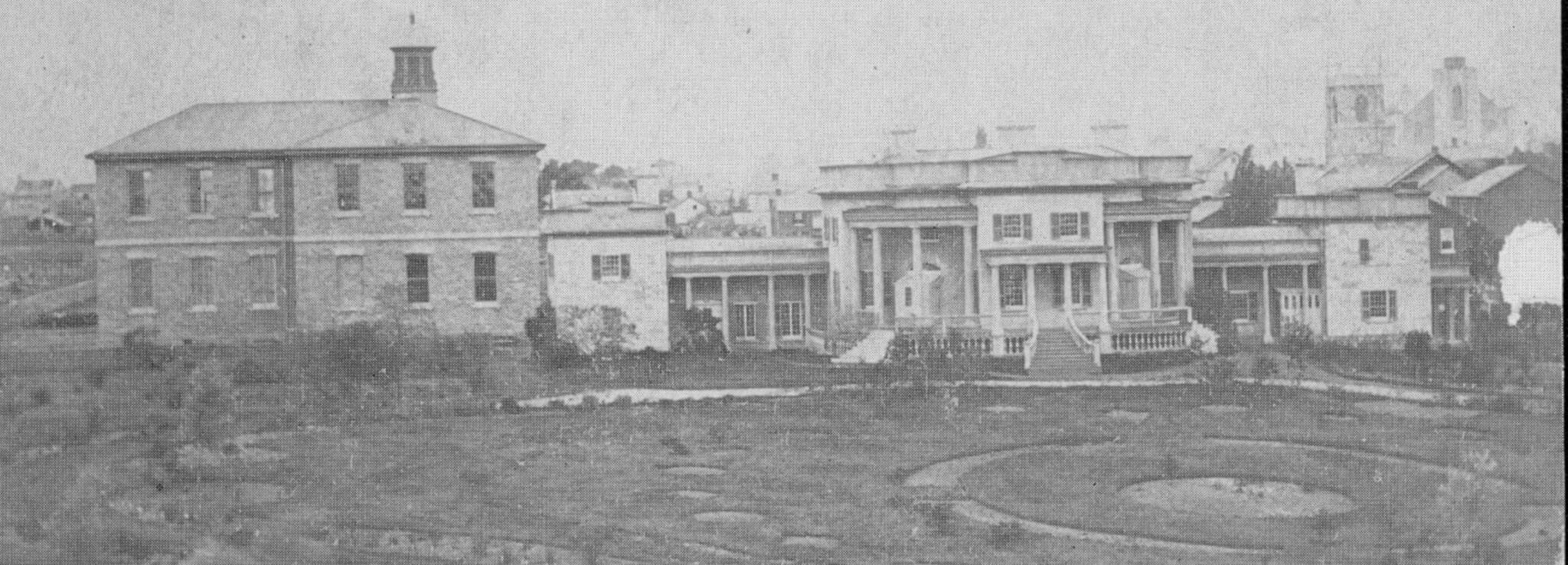
Built in 1839, Summerhill is the oldest building on campus. Lot 24, as it was originally known, was the private home of Archdeacon George Okill Stuart and played host to MPs when Kingston was the capital of Canada. The then-young Queen’s University acquired the building in 1853, which then housed the entire university. It is now a designated Ontario historical site, and the east wing is the official residence of the Principal.
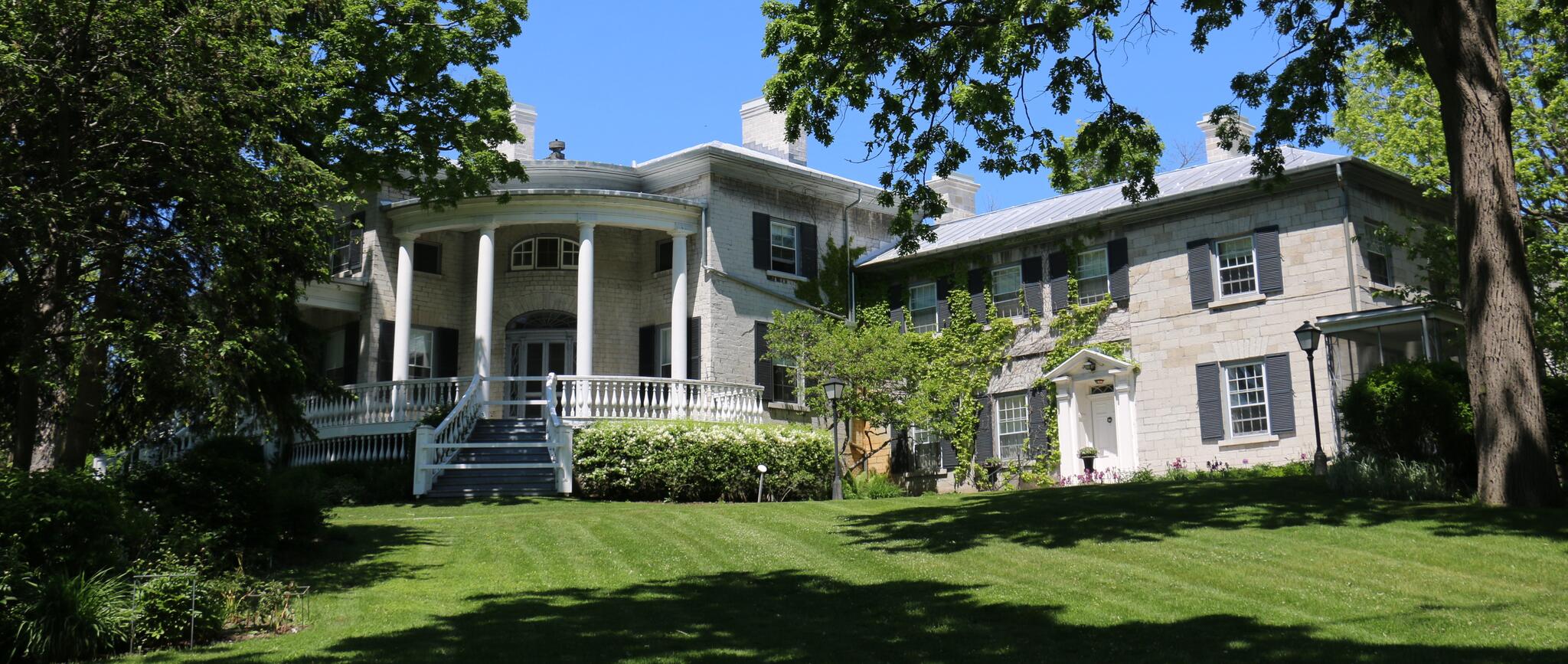
Snodgrass Arboretum
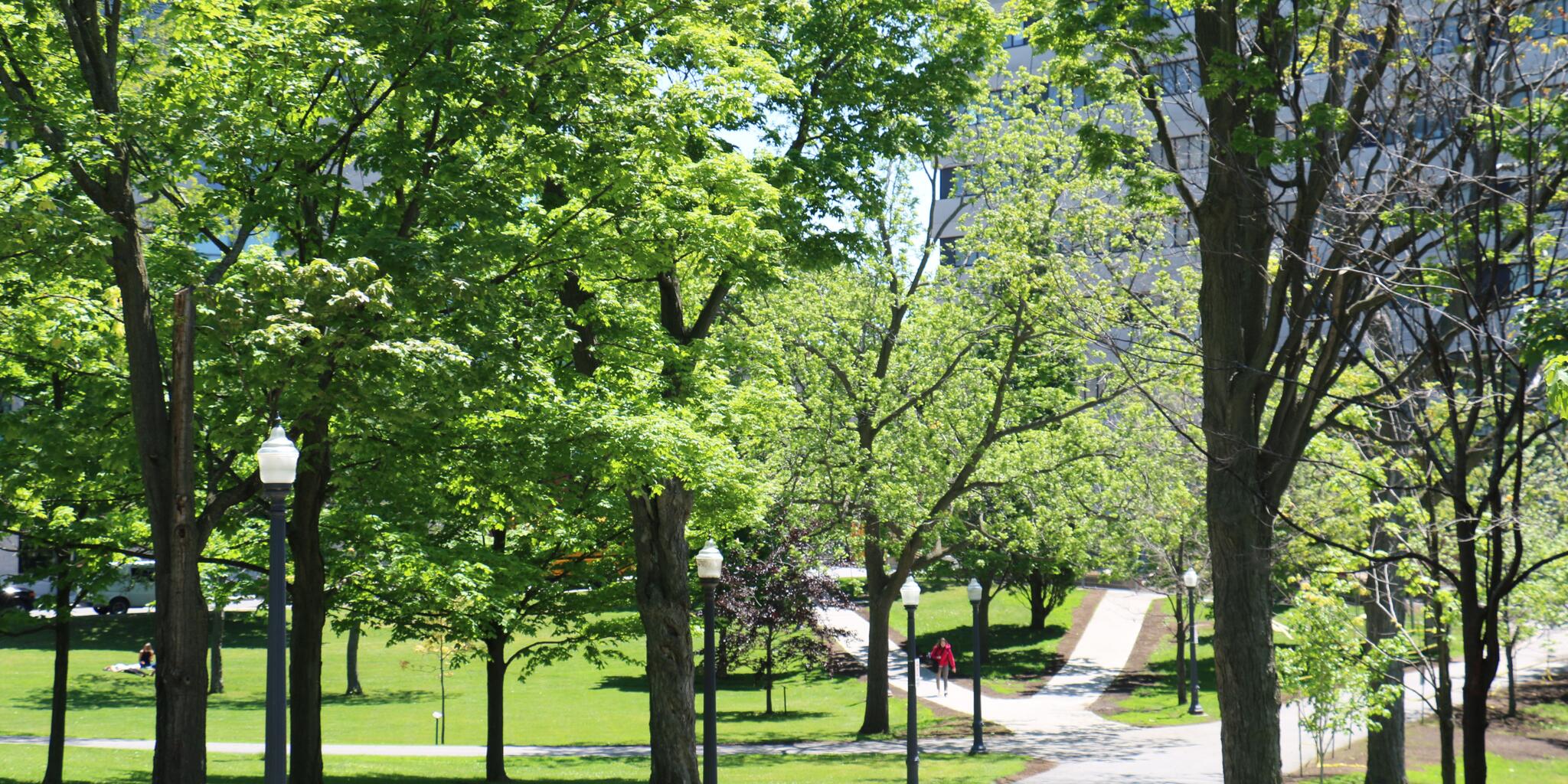
History is associated with preservation, and such is the case with Snodgrass Arboretum. The slope in front of Summerhill was the site of Canada’s first botanical garden (planted circa 1861). Kingston was then the home of the Botanical Society of Canada.
In 1999, Queen’s created the Snodgrass Arboretum, the boundaries of which include the entire lawn area in front of Summerhill and Theological Hall – an ideal location for a living treasure that houses a variety of tree species, many of which are native to Ontario and Canada, some of which are rare, and others are species from all over the world.
Today, the Arboretum’s proximity to Lake Ontario and the surrounding campus has contributed to a unique microclimate that makes Snodgrass a potential “living laboratory” for the study of floral species.
